Dynamic Rare Earth Element Model (DREEM)
Supply Chain & Market Analysis
Model Description
In this research, the authors attempt to bridge the gap in the literature by developing a comprehensive system dynamics (SD) model that analyzes both the rare earth element (REE) and the cobalt supply chains in response to a global deployment scenario of EVs. Approximately 80-90% of current EVs utilize rare earth permanent magnets in their traction motors. Sintered Nd-Fe-B magnets are used in EV motors due to their favorable characteristics, including high coercivity, thermal properties, and maximum energy product (BH)max range. One of the largest challenges of the Nd-Fe-B supply chain is that most magnet manufacturing takes place in China (92%) making the rest of the world (ROW) reliant on China’s output. To alleviate permanent magnet supply chain concerns, researchers with the Critical Materials Institute (CMI) have developed a lanthanum-neodymium (La-Nd) magnet as a substitute for sintered Nd-Fe-B magnets. In the La-Nd substitute, lanthanum and cobalt replace some of the neodymium and dysprosium used in the traditional sintered Nd-Fe-B magnet. The cobalt supply chain is already in tight supply and using more cobalt for the new magnet might further stress this supply chain.
To understand the impacts of substitution as well as key constraints to EV growth, this work was the first
attempt to connect cobalt and rare earth supply chains.
The authors set out to answer three key research questions:
1. What are the key constraints to EV deployment and does an alternative magnet or non-REE
magnet motor technology alleviate the constraints?
2. What individual improvements can be made to the cobalt or REE supply chain (depending on the
key constraints) to improve EV sales?
3. If EV deployment is still unfavorable after individual improvement
A system dynamics model was created to simulate market dynamics of magnet substitution and the associated material supply chains. The model was simulated from the years 2005 to 2050 in the software Stella Architect, version 3.1.1. Stella Architect was utilized for its intuitive interface capabilities.
The years between 2005 and 2019 represent historical information for model validation purposes. The years after 2020 simulate the future and output results and trends of the model. The deployment of CMI technology was set to the year 2027 following internal communication with the CMI principal investigators and leadership team.

A detailed description of the model can be found in our published article (“An integrated supply chain analysis for cobalt and rare earth elements under global electrification and constrained resources”).
A web browser and internet connection are required to run the interface of the model. To view the code, users need to have Stella Architect installed on their computers. For Stella licensing options, please click here.
Please contact the authors or INL’s Technology Deployment Department ([email protected]) for
licensing options. The code can be made available for free for learning purposes.
This work is supported by the Critical Materials Institute, an Energy Innovation Hub funded by the U.S. Department of Energy, Office of Energy Efficiency and Renewable Energy, Advanced Materials Manufacturing Technologies Office under Grant AL-12-350-001
This computer software was prepared by Battelle Energy Alliance, LLC, hereinafter the Contractor, under Contract No. AC07-05ID14517 with the United States (U. S.) Department of Energy (DOE). The Government is granted for itself and others acting on its behalf a nonexclusive, paid-up, irrevocable worldwide license in this data to reproduce, prepare derivative works, and perform publicly and display publicly, by or on behalf of the Government. There is a provision for the possible extension of the term of this license. Subsequent to that period or any extension granted, the Government is granted for itself and others acting on its behalf a nonexclusive, paid-up, irrevocable worldwide license in this data to reproduce, prepare derivative works, distribute copies to the public, perform publicly and display publicly, and to permit others to do so. The specific term of the license can be identified by inquiry made to Contractor or DOE. Neither the United States nor the United States Department of Energy, nor contractor makes any warranty, express or implied, or assumes any liability or responsibility for the use, accuracy, completeness, or usefulness or any information, apparatus, product, or process disclosed, or represents that its use would not infringe privately owned rights.
Author Contact
- Michael Severson
- [email protected]
-
Idaho National Laboratory
1955 N. Fremont Avenue
Idaho Falls, ID 83415

